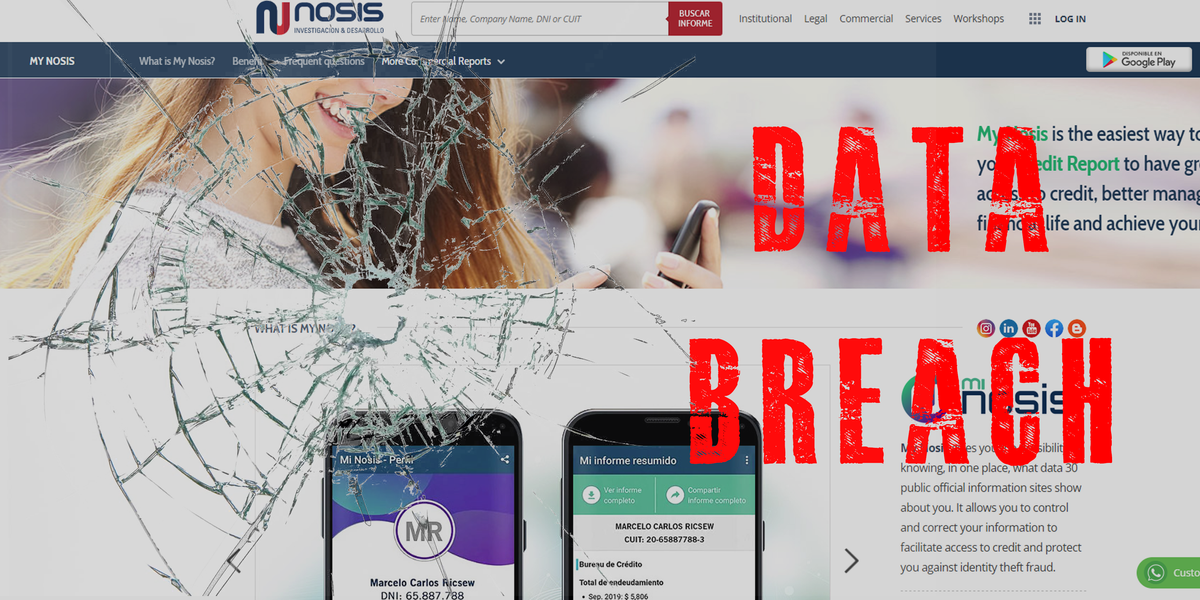

Dissecting the Mi Nosis Argentina Data Breach: A Cybersecurity Perspective
The recent data breach involving Mi Nosis Argentina, a provider of commercial background information and financial data, raises significant concerns. The leaked database, containing over 370,000 user records with sensitive personal information such as names, email addresses, phone numbers, and other details, represents a severe compromise of data privacy and security.

The Breach in Numbers
According to the information available, the Mi Nosis Argentina database leak exposed:
- 370,000+ user records
- Personal details, including names, email addresses, phone numbers
- Additional sensitive information like national ID numbers and financial data
This breach underscores the importance of robust data protection measures and the potential consequences of failing to implement them effectively.
Profiling the Threat Actor
Oorca is the username associated with this database leak from Mi Nosis Argentina. The leaked data includes sensitive personal information such as names, email addresses, phone numbers, and other details of over 370,000 individuals. This breach poses a significant risk of identity theft, financial fraud, and other malicious activities targeting the victims whose data has been exposed. The fact that the compromised data is being offered for sale on hacking forums suggests a financially motivated threat actor, likely a cybercriminal group or individual, behind this attack.
The leaked data, containing a wealth of personal and financial information, could be exploited for various malicious purposes, including:
- Identity theft and fraud
- Phishing campaigns and social engineering attacks
- Targeted cyber-attacks against individuals or the company itself
The fact that the data is being offered for sale on hacking forums further reinforces the likelihood of a financially driven motive behind this breach.
Potential Impact and Implications
Data breaches of this magnitude can have far-reaching consequences for both the affected individuals and the compromised organization. Some potential implications include:
- Financial Losses: Victims of the breach may face financial losses due to identity theft, fraud, or extortion attempts leveraging their exposed personal data.
- Reputational Damage: Mi Nosis Argentina’s reputation and credibility as a provider of sensitive financial and personal data could be severely tarnished, potentially losing customer trust and business.
- Legal Ramifications: Depending on the applicable data protection regulations, Mi Nosis Argentina may face legal consequences, including fines and lawsuits, for failing to protect user data adequately.
- Regulatory Scrutiny: The breach will likely attract the attention of relevant regulatory bodies, potentially leading to investigations and additional compliance requirements for the company.
Lessons Learned and Mitigation Strategies
Incidents like the Mi Nosis Argentina data breach serve as a stark reminder of the importance of implementing robust cybersecurity measures and adhering to best practices for data protection. Some key lessons and mitigation strategies include:
- Encryption and Access Controls: Sensitive data should be encrypted at rest and in transit, with strict access controls limiting exposure to only those requiring it for legitimate purposes.
- Regular Security Audits: Periodic security audits and penetration testing can help identify vulnerabilities and weaknesses in an organization’s cybersecurity posture before threat actors exploit them.
- Incident Response Planning: A well-defined and regularly updated incident response plan can help organizations respond effectively to data breaches, minimizing the potential impact and ensuring compliance with relevant regulations.
- Employee Awareness and Training: Fostering a culture of cybersecurity awareness through regular employee training can help mitigate the risk of insider threats and human error, which often contribute to data breaches.
- Threat Intelligence and Monitoring: Leveraging cyber threat intelligence and continuous monitoring can help organizations stay informed about emerging threats, vulnerabilities, and attack vectors, enabling proactive defense measures.